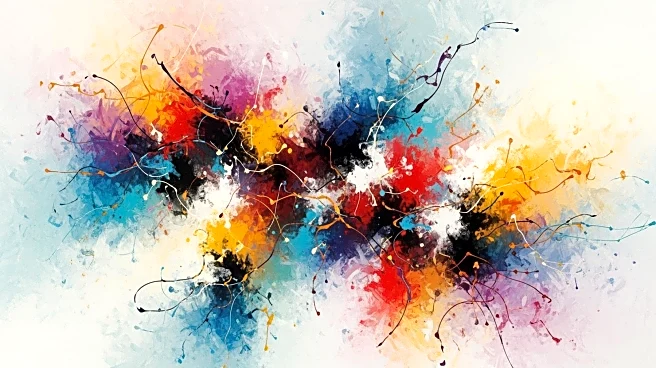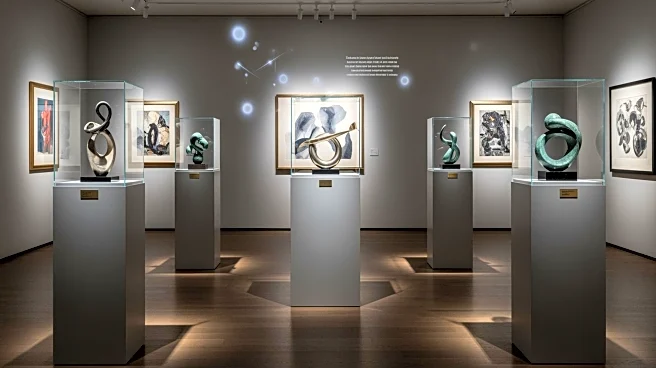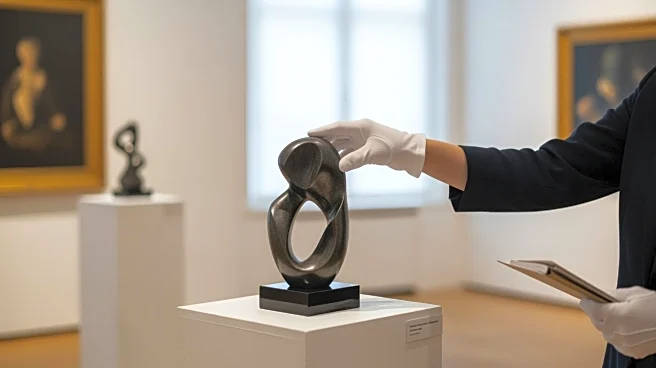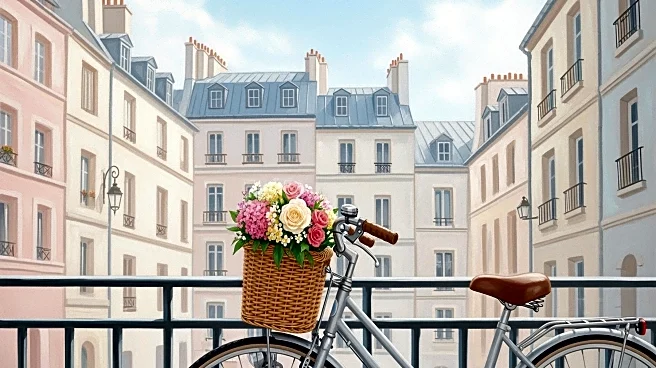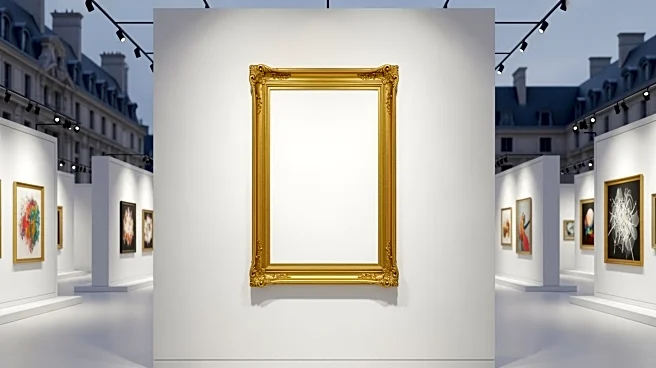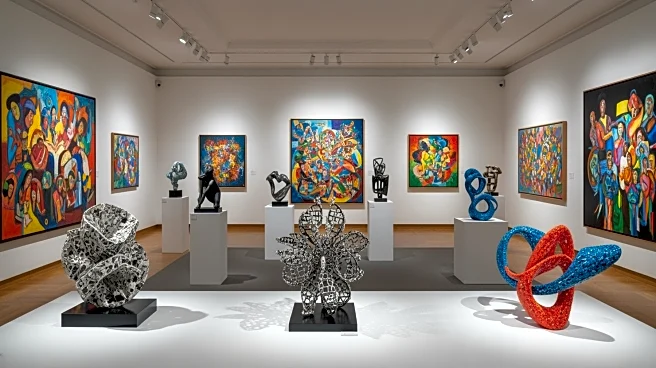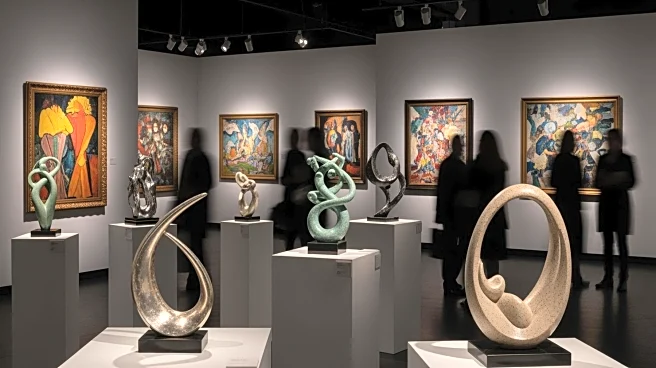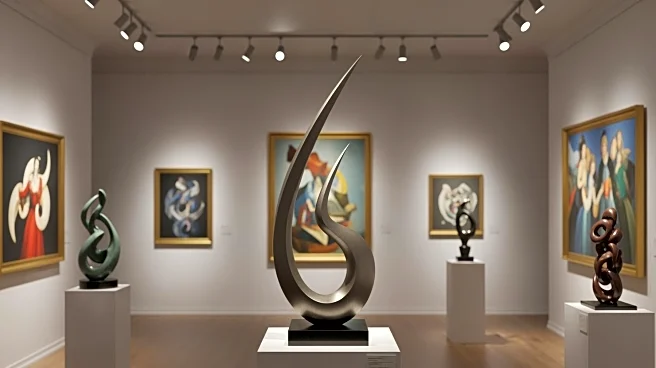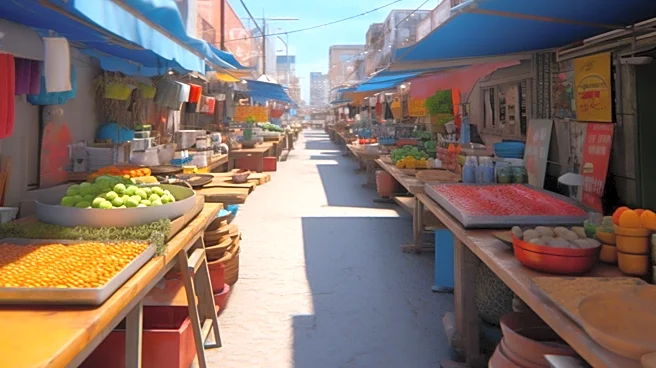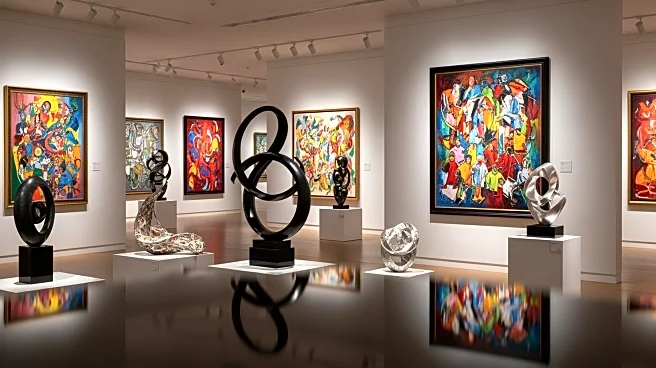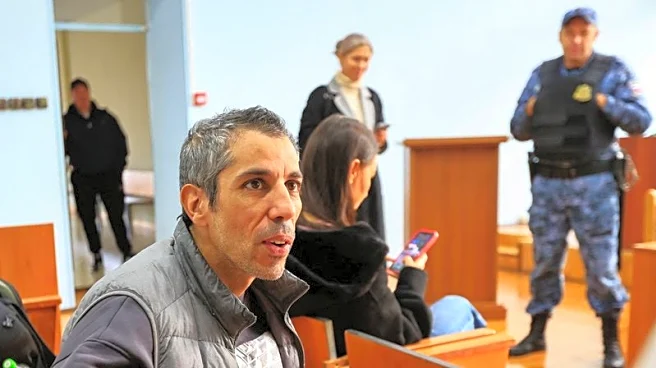What's Happening?
The Asian art scene in Paris is experiencing a significant resurgence, marked by increased visibility and influence. This development is highlighted by events such as Art Basel's return to Paris and the
awarding of the Marcel Duchamp Prize to China-born artist Xie Lei. The city has long been a hub for Asian artists, with historical figures like Zao Wou-Ki and contemporary artists like Chen Fei and Wang Ziping contributing to its rich cultural tapestry. The Asia Now fair, a central pillar of this ecosystem, continues to foster this growth, with events like a collaboration between Art Drunk Kitchen and artist Liang Fu showcasing Sichuan street food at a luxury venue. This vibrant scene is supported by a community of Asian professionals who find Paris a more livable and receptive environment compared to other major cities.
Why It's Important?
The growing presence of Asian artists in Paris signifies a broader cultural shift towards inclusivity and diversity in the global art scene. This trend not only enriches the cultural landscape of Paris but also challenges traditional narratives and encourages new dialogues. The increased visibility of Asian artists can lead to greater opportunities and recognition, potentially influencing art markets and cultural policies. This development also reflects a changing perception of Asian art, moving beyond exoticism to a more nuanced appreciation of its contributions to contemporary art. The impact is felt not only in the art world but also in fostering cross-cultural understanding and collaboration.
What's Next?
As the Asian art scene continues to thrive in Paris, further integration and collaboration with local and international artists and institutions are expected. The upcoming events and exhibitions, such as those by Chen Fei and Wang Ziping, will likely draw more attention to Asian artists. Additionally, the momentum from events like Art Basel and Asia Now could lead to more permanent spaces and platforms for Asian art in Paris. Stakeholders, including galleries, curators, and cultural institutions, may increasingly focus on supporting and promoting Asian artists, potentially leading to policy changes that further encourage diversity in the arts.
Beyond the Headlines
The rise of Asian artists in Paris also highlights deeper issues of representation and identity in the art world. It challenges the traditional Eurocentric narratives and offers a platform for voices that have been historically marginalized. This shift could inspire similar movements in other cultural capitals, promoting a more global and inclusive art scene. Moreover, the presence of Asian artists in Paris can serve as a bridge between Eastern and Western art traditions, fostering a richer and more diverse cultural dialogue.
